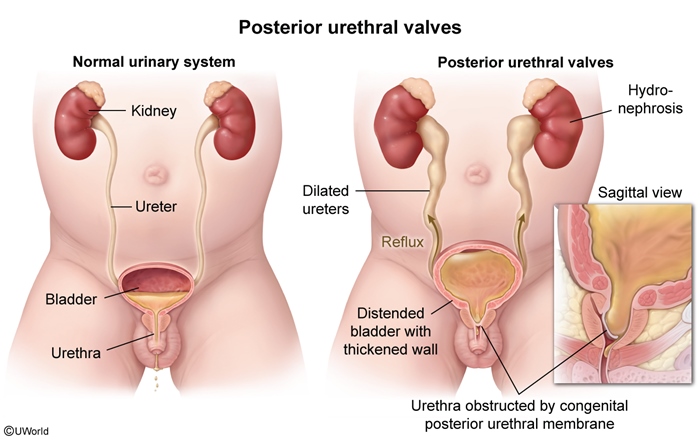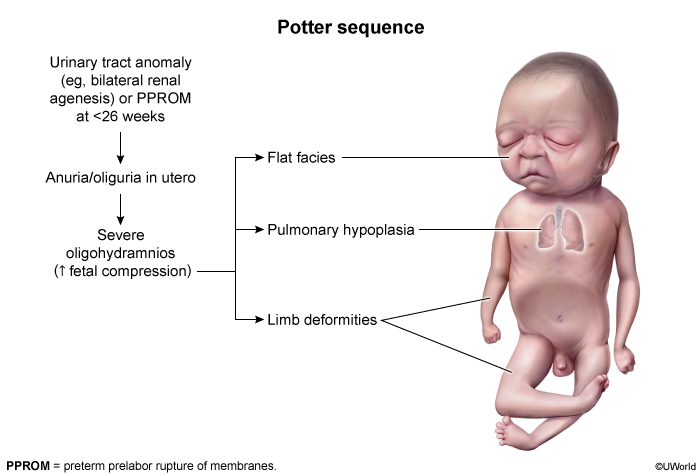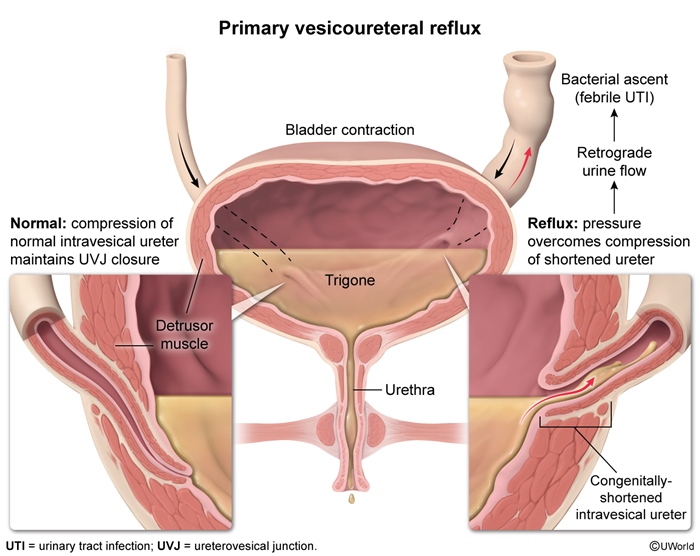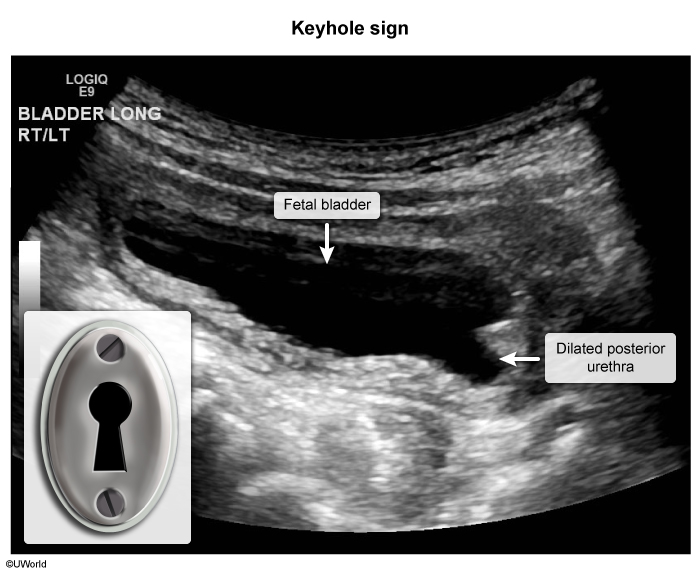Posterior Urethral Valves
Article Sections
Introduction
Posterior urethral valves (PUV) are membranous folds that cause complete or partial obstruction of the prostatic urethral lumen (Figure 1). PUV are the most common cause of urinary tract obstruction in male infants.
Pathogenesis
By 14 weeks gestation, the pelvic and penile segments of the male urethra fuse to form a continuous, solid structure that later undergoes canalization. Incomplete canalization results in an oblique membranous fold that extends anteriorly from the posterior urethral wall, causing varying degrees of urethral obstruction. Elevated pressure proximal to the obstruction leads to dilation of the proximal urethra and hypertrophy of the bladder wall over time. In addition, the elevated intravesical pressure prevents complete closure of the ureterovesical junction, allowing retrograde urine flow into the ureters (ie, secondary vesicoureteral reflux
Continue Learning with UWorld
Get the full Posterior Urethral Valves article plus rich visuals, real-world cases, and in-depth insights from medical experts, all available through the UWorld Medical Library.
Figures



Images
